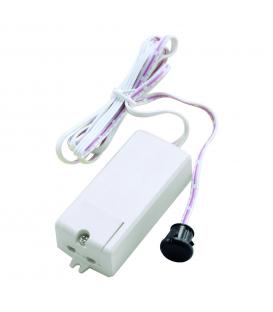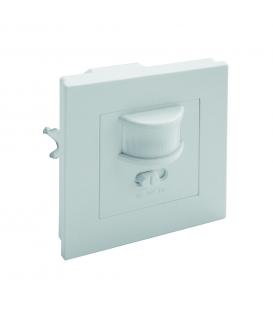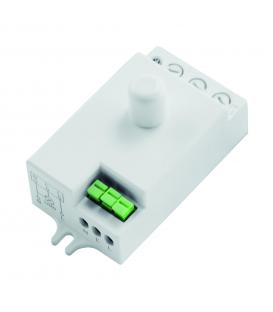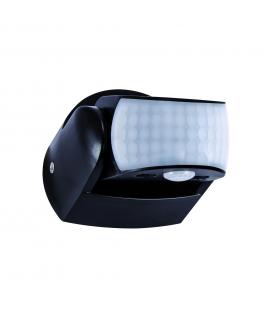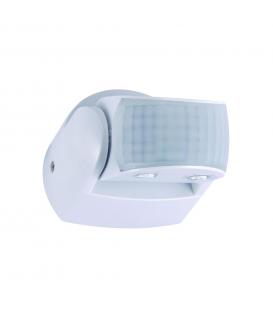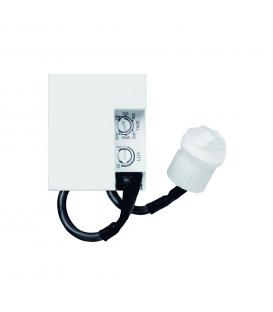Motion sensors
Many modern motion detectors or motion sensors use a combination of different technologies. While combining multiple sensing technologies into one detector can help reduce false triggering, it does so at the expense of reduced detection probabilities and increased vulnerability. For example, many dual-tech sensors combine both a PIR sensor and a microwave sensor into one unit. In order for motion to be detected, both sensors must trip...
motion, sensors, security, efficiency, convenience
Description of Motion sensors
... . This lowers the probability of a false alarm since heat and light changes may trip the PIR but not the microwave, or trees may trigger the microwave but not the PIR.Motion sensors are an important component of security systems, automated lighting control, home control, energy efficiency and other usable systems based on human or animal movement.
We know several technologies for motion detection:
- Passive infrared (PIR) sensors are sensitive to a person's skin temperature through emitted black-body radiation at mid-infrared wavelengths, in contrast to background objects at room temperature.
- Microwave sensors detect motion through the principle of Doppler radar, and are similar to a radar speed gun. A continuous wave of microwave radiation is emitted, and phase shifts in the reflected microwaves due to motion of an object toward (or away from) the receiver result in a heterodyne signal at a low audio frequency.
- Ultrasonic sensors emits an ultrasonic wave (sound at a frequency higher than a human ear can hear) and receives reflections from nearby objects. Exactly as in Doppler radar, heterodyne detection of the received field indicates motion.
Motion sensors are often used in conjunction with light bulbs, LED lamps and luminaires (light fixtures) to create more energy-efficient and convenient lighting systems. By incorporating motion sensors into lighting setups, you can achieve the following benefits:
- Energy Efficiency: Motion sensors can automatically turn lights on when they detect movement in an area and turn them off when no motion is detected for a specified period. This helps to conserve energy by ensuring that lights are only illuminated when needed.
- Convenience: Motion-sensor-enabled lighting systems eliminate the need for manual light switches. Lights can automatically turn on as you enter a room and turn off when you leave, enhancing convenience and ease of use.
- Security: Motion-sensor-controlled lighting can enhance security by illuminating areas when motion is detected, deterring potential intruders and providing better visibility in and around a property. Motion-sensor-activated lighting can improve safety by automatically illuminating staircases, hallways, and other potentially hazardous areas when someone approaches.
- Cost Savings: By reducing the amount of time that lights are left on unnecessarily, motion sensors can lead to cost savings on electricity bills.
When integrating motion sensors with light bulbs, LED lamps and luminaires, there are a few key considerations:
- Sensor Placement: Proper placement of motion sensors is crucial. They should be positioned to cover the desired area effectively without false triggers from outside movements.
- Sensor Sensitivity: Motion sensors often have adjustable sensitivity settings to control how easily they detect motion. This can help reduce false alarms caused by small movements.
- Activation Time: The duration for which lights remain on after motion is detected can be adjusted to suit the specific needs of the environment.
- Light Bulb Compatibility: Not all light bulbs are compatible with motion sensors. Make sure to choose bulbs that work with the specific type of sensor you are using.
- Dimming and Color Temperature: Some advanced systems allow for dimming or adjusting the color temperature of the light based on motion and time of day, providing further customization and energy savings.
- Wiring and Installation: Depending on the type of motion sensor and the lighting setup, proper wiring and installation are important for the system to function correctly.
- Integration with Smart Home Systems: Many modern motion sensor-enabled lighting systems can be integrated with smart home platforms, allowing for remote control, scheduling, and automation through smartphone apps or voice assistants.
Overall, integrating motion sensors with light bulbs, LED lamps and luminaires can contribute to a more efficient, convenient, and responsive lighting environment, whether in residential, commercial, or industrial settings.
Narrow the selection
Featured products



